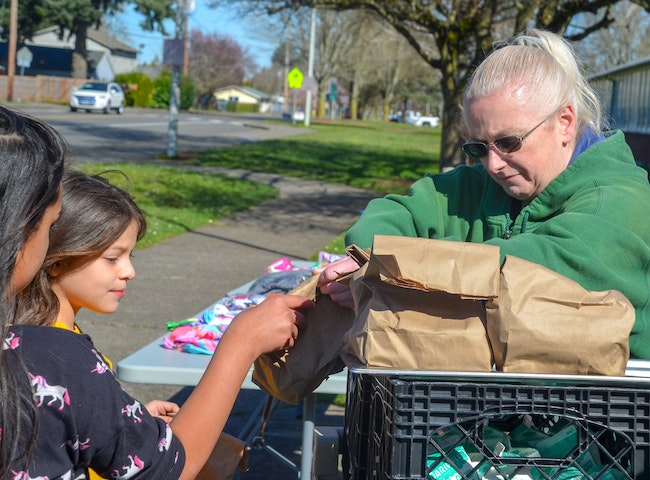This article was originally published by The Oregonian/OregonLive and is reprinted with permission.
The growing movement to provide free school lunches for all students — a concept that gained momentum during the pandemic — has left Oregon policymakers with a conundrum.
On the one hand, the idea has staying power, and support from powerful allies who say it can make a meaningful dent in food insecurity rates. In 2018-2019, about 25% of Oregon schools gave free meals to all students, regardless of their ability to pay. In the current school year, that’s jumped to more than 50%.
But that change has also made it increasingly difficult both to pinpoint what percentage of students in a given district are living at the poverty level, and to precisely target the money and services intended to help them. That group of students typically has lower test scores than their peers, misses more school days and is less likely to graduate from high school.
“Universal access makes it so we have no picture of poverty,” said Scott Nine, an assistant superintendent in the Oregon Department of Education’s Office of Education Innovation and Improvement. “Every state in the country is grappling with this same issue.”
In the pre-pandemic era, eligibility for free and reduced lunch was the metric used to designate which students should be considered economically disadvantaged. The metric was already imperfect because not everyone who is eligible for free lunch signs up for it, especially at the high school level, when it can carry a social stigma. But if everyone is eligible for free school lunch, the imperfect metric becomes unusable.
On Thursday, the seven members of the state Board of Education voted to adopt a new definition, which will take effect in the 2023-2024 school year. From then on, students who are considered “economically disadvantaged” by the state will be those whose families received food stamps or other federal assistance during the school year, are in the foster care system, are houseless and/or are migrants.
The new definition will likely result in a smaller group of students being identified as living in poverty, Nine said. But casting that narrower net means that help can be more precisely targeted to those in the greatest need, he added.
Shamiko Montgomery, a former Bend school board member who was appointed to the state board of education this past fall, said she was concerned that the new definition could undercount students of color, in part because it does not include Medicaid eligibility.
She pointed to students from the Federated States of Micronesia, the Marshall Islands and the Republic of Palau, who are eligible for Medicaid coverage even if they are non-citizens, per federal law as of December 2020. (In Oregon, that coverage is through the Oregon Health Plan.)
Jon Wiens, the director of accountability and reporting for ODE, said that the state’s definition could expand to include Medicaid eligibility in future, pending a data-sharing agreement with the federal government.
There are other metrics that could be incorporated to make sure no students fall through the cracks, Wiens noted, from parental incarceration rates to medical debt. But he said policy-makers need to balance that against the time and resources it would take for school districts to collect that very personal data directly from families.
The change in definition won’t affect the administration of school meal programs, Wiens said, but could affect the financial calculus for grant-based activities, like summer schools at high needs schools funded by the Student Success Act, a bill passed in 2019 that generates an additional $1 billion a year for schools via a corporate tax.
-Julia Silverman, @jrlsilverman, [email protected]
STORY TIP OR IDEA? Send an email to Salem Reporter’s news team: [email protected].
JUST THE FACTS, FOR SALEM – We report on your community with care and depth, fairness and accuracy. Get local news that matters to you. Subscribe to Salem Reporter. Click I want to subscribe!









